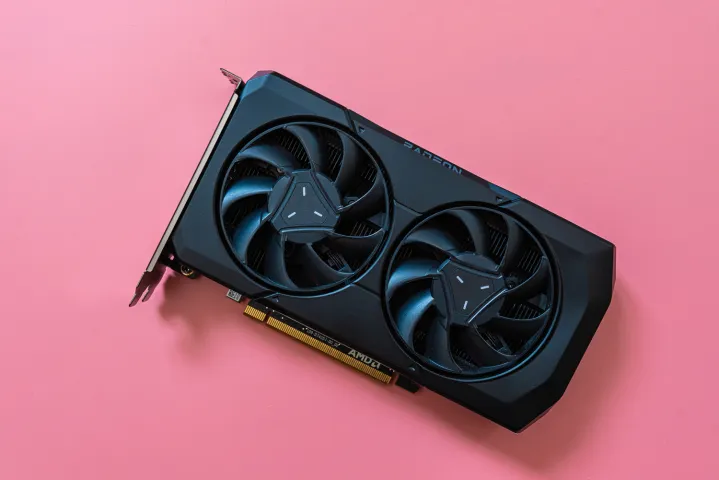The list of the best graphics cards will probably look a lot different in a month’s time. We’re standing on the edge of the next generation of graphics cards, and it looks like Nvidia, AMD, and Intel all have big plans in store. At least from the conversations I’ve had, all eyes are on what the next generation of graphics cards has to offer before making an upgrade decision.
That’s generally good advice — if new hardware is about to launch, there isn’t much reason to spend up for last-gen components. You’ll likely pay a higher price, and you could be missing out on some big performance gains. This generation, however, it’s important to temper expectations. Although the next generation of graphics cards is exciting, it probably won’t be a reality for most gamers anytime soon.
Always start with the flagships

We never get a bunch of graphics cards at once. Nvidia and AMD slowly trickle out the cards in a new generation over the course of several months, and that time adds up quickly. To illustrate, here’s a timeline of releases in the past generation:
- RTX 4090 — October 12, 2022
- RTX 4080 — November 16, 2022
- RX 7900 XTX and RX 7900 XT — December 13, 2022
- RTX 4070 Ti — January 5, 2023
- RTX 4070 — April 13, 2023
- RTX 4060 Ti 8GB — May 24, 2023
- RX 7600 — May 25, 2023
- RTX 4060 — June 29, 2023
- RX 7800 XT and RX 7700 XT — September 6, 2023
- RX 7600 XT — January 24, 2024
- RX 7900 GRE — February 27, 2024
I haven’t included every GPU released here — particularly cards like the RTX 4070 Super — but this timeline paints a pretty clear picture about how the main stack is spread out. From the release of the RTX 4090 to the release of the RTX 4060 — the latter of which is the second most popular GPU on Steam — more than eight months passed.
AMD had a slightly condensed timeline, but that’s only because it decided to release the budget-focused RX 7600 immediately following its flagship release. For midrange options like the RX 7700 XT, you’re still looking at a nine-month gap. Regardless of the release cadence, it’s going to be a while before we see the full lineup of next-gen graphics cards.
That flies in the face of the traditional advice of “just wait and see” when we’re standing on the edge of a new GPU generation. It makes sense to wait a few weeks if you’re interesting in buying a flagship, but for most people, that advice boils down to waiting more than half a year to see if an upgrade is worth it. By that logic, you’d never upgrade your PC.
Wait, then go

Don’t misunderstand me — I’m not saying you should run out and buy a new GPU right now. It’s worth waiting to see what the next generation has in store, but that really boils down to features more than it does the hardware itself. Waiting a few weeks can inform your upgrade decision, but it won’t make that decision for you.
The big reason to wait is to see if there are any new features exclusive to the next generation of graphics cards. We saw that this past generation with DLSS 3, which has become a major selling point for Nvidia’s GPUs. If there are some exclusive features — something like, for example, FSR 4 for AMD’s next-gen GPUs — it could be worth holding out for a GPU upgrade.
If there aren’t any new features, or you don’t particularly care about whatever new features there are, waiting doesn’t make a ton of sense. That’s particularly true with the range of the most popular graphics cards people buy — GPUs like the RTX 4060 and RX 7600 around $300. There’s a good chance we won’t know how the next-gen versions of these GPUs perform for close to a year. By then, you might even start considering your next next GPU upgrade.

In addition, with all of the focus on the next generation of graphics cards, you could miss out on great options available now and pass up on close to a year of an upgraded PC. No one wants to be in that position. Getting tunnel vision means you can miss out on great releases like the recent Intel Arc B580 that provide excellent performance right now.
Waiting may not get you a substantially better graphics card, either. The RTX 4060 and RX 7600 are prime examples here. The RTX 3060 is slower than the RTX 4060, no doubt, but it still delivered above 60 frames per second (fps) in nearly every game you could throw at it at 1080p by the time the RTX 4060 released. Similarly, the RX 7600 was outmatched by the previous-gen RX 6700 XT, which was available for around the same price at the time.
When a new generation rolls around, it’s easy to get swept up in the hype surrounding the new flagships, especially now, when the going price for a flagship is well above $1,000. Lower down the stack, things generally aren’t as rosy, with new mainstream options vying for a spot among cheaper last-gen options. I suspect the next-gen options in this bracket will follow suit.
Targeting an upgrade

As usual, it’s important to target a GPU upgrade to what you actually need. That will save you the most money and deliver a gaming experience you enjoy. That timeless advice sometimes gets lost when a new generation rolls around, as the hype around shiny new hardware and everything it brings sparks the conversation around what options lower down the stack could offer.
It’s just not worth holding out, particularly if you’ve been sitting on a GPU upgrade for a while. I’m talking about the gamers still rocking a GTX 1650 or GTX 1060, or, lord forbid, an RX 580. A card like the Arc B580 will provide an infinitely better experience, and if you’re willing to shop around, you can even find something like an RTX 3070 for around the $300 mark.
Not only will you be able to drastically improve your gaming experience now but you’ll also be able to save up for your next upgrade — maybe a higher-resolution monitor or a newer CPU. That’s better than sitting on hardware you want to replace just to see what, maybe, you’ll be able to get in the next generation.
So, wait and see what Nvidia, AMD, and Intel have in store next month. I’m just as excited as you are, believe me. But don’t let that cloud an upgrade decision about your PC, particularly if you aren’t among the rare few looking at picking up the latest flagship.





